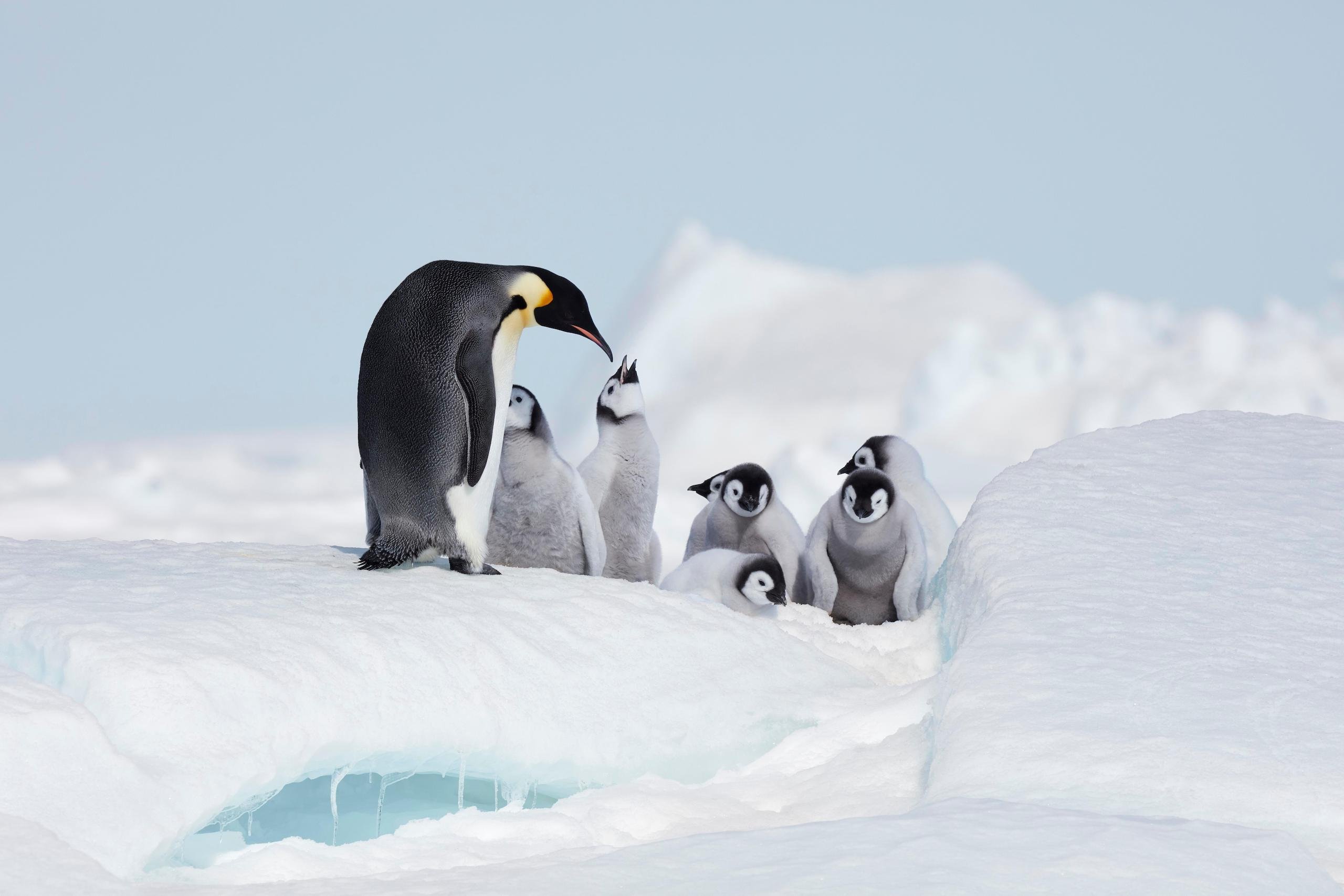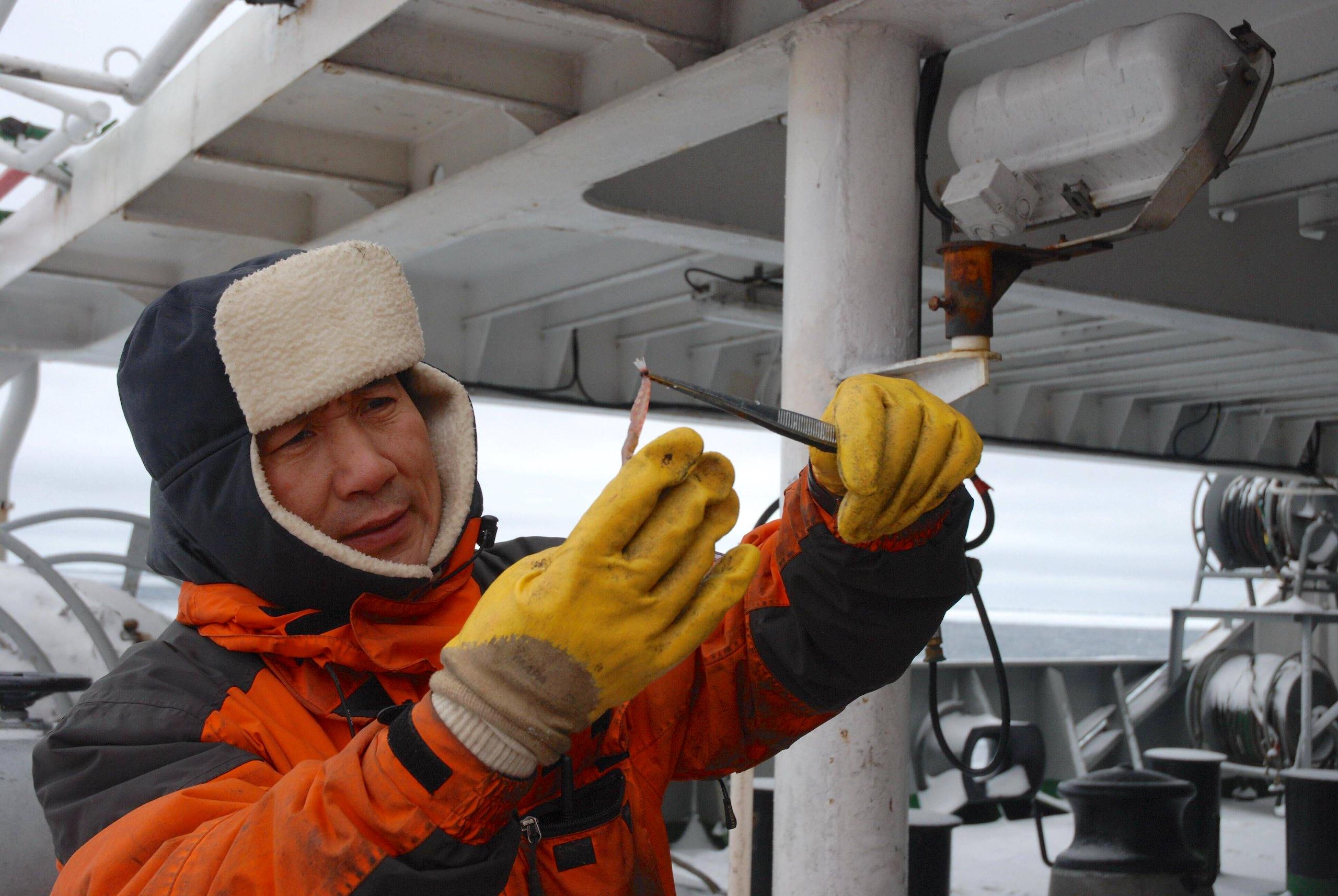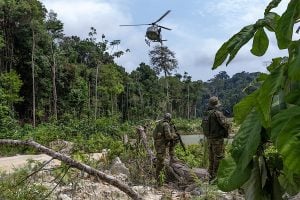For emperor penguins, crabeater seals and humpback whales living in the sea off the frozen Antarctic Peninsula, one thing is a staple on their menu: shrimp-like, thumb-length, fast-swimming krill.
But the chase for krill has become increasingly competitive in recent years, as humans seek more fish feed for aquaculture. Industrial fishing vessels that have long caught these crustaceans in the Southern Ocean have begun casting their nets closer to hotspots where penguins breed and whales hunt.
Shielding marine animals in the Southern Ocean from fishing and other threats such as climate change has been strenuous for conservationists. October’s annual meeting of the Southern Ocean conservation body, the Commission for the Conservation of Antarctic Marine Living Resources (CCAMLR), saw no progress on adding a new marine protected area (MPA).
MPAs are areas of the ocean designed to protect animals, habitats and important ecosystem functions from the impacts of human activities. They enjoy different levels of protection: some have rules strictly prohibiting all human activities while others allow some access for leisure, fishing and other use.
Worse, say some commentators, the meeting even failed to extend a rule that spreads krill fishing evenly to minimise impact, allowing it to expire instead.
“A lot of work had gone on before the meeting and in the first week and it was very positive. When the whole thing fell apart in the last two days, it was brutal,” says Lynda Goldsworthy, a research fellow at the University of Tasmania’s Institute for Marine and Antarctic Studies.
CCAMLR meetings have now failed to agree on a new marine protection area in the Southern Ocean for eight years in a row.
Russia and China, which have been most opposed to MPAs historically, again rejected protection measures campaigners hoped would be adopted at the meeting in late October. Krill fishing served as a flash point. “[China] went into the meeting with a krill fishery expansion as their priority,” says Goldsworthy.
With China asserting its fisheries interests and Russia’s continuing, unswerving objections to conservation measures, experts say CCAMLR – a body that once sat at the forefront of ocean protection – has reached an existential crossroads.
Deal breakers
This year, CCAMLR member states went the extra mile to break a long-running deadlock on protected areas by having a pre-meeting in July. Negotiators chewed over a plan that would increase krill catch. Since 2000, a precautionary limit of 620,000 tonnes per year has been in place for so-called “area 48”, which includes the peninsula and is where most krill fishing occurs. National delegations also discussed a proposed protected area around the Western Antarctic Peninsula, where krill fishing, tourism and warming are more intense than in other Antarctic waters.
The Commission for the Conservation of Antarctic Marine Living Resources (CCAMLR) was established in 1982. It was born at a time when the Soviet Union had an expanding fishery in Antarctica. CCAMLR has carried on overseeing marine life in the Southern Ocean since the end of the cold war and grown to 27 members, including the EU, Russia and China. Member states meet annually in Hobart, Australia to mainly discuss conservation and fisheries management. Any changes require the agreement of all member states.
Observers say the July meeting ended positively, with an acknowledgement that increased krill catches and plans for a new protected area should proceed together. But at the official meeting in October, this compromise collapsed with no movement on either measure.
Dialogue Earth was told that after the collapse of the deal, China refused to extend an existing conservation measure that controls the distribution of krill catches among area 48’s fishing sub-areas. This means all 620,000 tonnes could in theory be harvested from just one small area.
According to the preliminary report of the October meeting, China’s delegation said krill fishing rules should follow advice first issued by CCAMLR’s scientific committee in 2022. That advice says raising the catch limit for area 48.1 (part of area 48) to 668,101 tonnes would be permissible.
China’s delegates added that the revision on catch limits “did not need to be tied directly to the adoption of an MPA”, and there is “no scientific basis” to argue that an MPA should be created before adopting a fishery rule. They also pointed to their past contributions to MPA discussions, and expressed hope that member states will eventually reach a consensus.
The expiration of the rule on krill catch distribution “was not a request, but rather was a natural outcome of its text”, they added.
Many researchers also think the total krill catch for Antarctica could safely increase with conservation measures, such as the proposed protected areas, in place. But there are concerns about concentrating fishing in particular areas.
Dialogue Earth spoke to Holly Curry from the Antarctic and Southern Ocean Coalition, an international union of marine preservation organisations. “If you are a penguin or a whale, if you live in a specific area that is experiencing concentrated krill fishing, you are going to be disproportionately impacted by that. We are unfortunately worse off now than a year ago, which is very distressing,” she says.
The big hunt for a tiny catch
Soviet Union boats once dominated the Southern Ocean krill fishery. Since the union’s collapse, Russia’s influence has been much diminished. “They don’t have any real krill fishing interest anymore,” says Liu Nengye, an associate law professor at the Singapore Management University who works on ocean and environmental topics. He says Russia’s constant rejection of conservation proposals is “pretty much trying to justify their presence [at CCAMLR].”
Unlike its northern neighbour, China owns an expanding distant-water fishing fleet. “They may cap the numbers of the fleet, but their capacity is still growing,” Liu says. “That’s why they see CCAMLR waters as a potential available space [for growth].”
In September, a shipbuilder in China’s south-eastern province of Fujian launched its newly developed Antarctic krill fishing and processing vessel – the largest in the country. Named Fuyuanyu 9199, it cost the company over CNY 600 million (USD 80 million), according to Chinese media reports. At least one other privately funded Chinese vessel is in the pipeline.
China is also increasing its Antarctic scientific research. Its 40th Antarctic expedition, which ended in April, with its Xuelong polar icebreaker investigating krill distribution and other topics.
All these ambitions come from the top and serve China’s aspiration to build “a strong marine nation”. Accordingly, its current five-year plan for national fisheries development specifies the need to “develop polar fisheries orderly and steadily”.
Another official policy paper on distant-water fishing, released in 2022 by the Ministry of Agriculture and Rural Affairs in response to the five-year plan, set out to improve compliance with CCAMLR’s rules. It guides relevant government departments to “actively participate in the affairs of CCAMLR and strictly implement conservation measures.”
China comes second to Norway as the world’s most extractive fisher of Antarctic krill. Chile, South Korea and Ukraine also actively harvest krill. Norway, however, has supported protection proposals despite its krill interests, say CCAMLR watchers. It has not been among those blocking the Antarctic Peninsula MPA.
A more assertive China
Safeguarding its fishing interests was what chiefly impelled China to join CCAMLR in 2007, Liu says. At that time, four Chinese-flagged fishing vessels were on CCAMLR’s blacklist for illegal fishing and the government wanted them to be delisted, according to his research.
After joining the commission, China did not exercise its veto right when CCAMLR designated its first marine protected area, the South Orkney Islands Southern Shelf, in 2009. China also supported a second MPA in the Southern Ocean’s Ross Sea in 2016.
Since then, Liu says, China’s delegation has grown more assertive on fishing issues. For instance, it has argued “no-take” protected areas that ban all fishing violate CCAMLR’s rules, which state that “conservation includes rational use”.
The country’s delegation also argued for more stringent requirements for creating protected areas. “They are essentially saying that you can establish MPAs, but the threshold needs to be very high, meaning that you need to have baseline data and specific conservation goals,” says Liu. “They set the bar very high.”
Domestically, Chinese scientists have voiced scepticism about Antarctic protected areas. They have said proposals at CCAMLR lack scientific evidence and data to prove both necessity and cost-effectiveness.
“Proposed management measures should be based on the ‘best available science’ rather than subjective, incomplete knowledge,” wrote two Shanghai Ocean University scientists in a 2022 paper.
“Creating MPAs without sufficient scientific basis does not help conserve Antarctic living resources effectively and may also increase the risk of Antarctic governance being monopolised.”
Plotting future courses
After another year of CCAMLR stalemate, observers and campaigners are scratching their heads for a way forward.
Liu says CCAMLR could uphold “business as usual”, meaning it would not adopt new conservation measures and protected areas, but would continue to manage fisheries and enforce the two existing MPAs.
A worse option, he says, would be a dysfunctional CCAMLR, in which intensified disputes over protected areas exacerbate disagreement on other issues, including fisheries.
In another scenario, members could change the focus of discussions to accommodate China’s positions. For example, says Liu, members could put aside discussion of new protected areas and “do other things with conservation in mind”, such as improving the regulation of research fishing.
Goldsworthy says China is already pushing the commission away from a body mainly focused on conservation to one that focuses mainly on regulating fisheries. But she is not ready to give up on Antarctic protected areas yet. She thinks krill fishing is still a legitimate lever, as member states can refuse any requests to raise the krill catch limit or open new fisheries unless a new MPA deal is clinched.
“Unless we have an MPA dotted and crossed, then no, we’re not going to expand the krill fishing,” she says.










